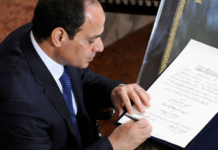By: Dalia Mansour
Every year, Valentine’s Day leads to a one-day rush of consumerism, including spending sprees on flowers, chocolates, teddy bears, hotels and dinner reservations. It has always been a tremendous day economically for retailers. But perhaps shoppers and Valentine’s celebrants are seeing things a bit more clearly and realistically this year. Recently Americans are spending less money on them and other things.
For the past few years, Valentine’s Day merchandise has gotten increasingly scary. Unexpectedly for the first time in 10 years, Valentine’s Day spending is getting down. According to US National Retail Federation, that event contributed $18.2 billion to the economy. That’s lower than the record $19.7 billion spent in 2016. It’s also less than the $18.9 billion spent in 2015, and the $18.6 billion spent in 2013. Though, It’s more than the $17.4 billion spent in 2014. That’s not good news for the economy. Consumer spending drives almost 70 percent of economic growth, as measured by gross domestic product. That’s crucial this year because business spending has been declining. The latest GDP report shows that the strong dollar has hurt exporters, most of whom are manufacturers. That means the consumer must spend more to keep America’s economic engine running.
The numbers of people who celebrate Valentines’ Day have been falling since 2007. Only 54 percent celebrate the holiday, fewer than the 54.8 percent who celebrated it in 2016. That number has been declining since the record of 63 percent in 2007. That’s because the number of older people in the population is rising. They are less likely to celebrate Valentine’s Day. Younger people, who still try to impress potential mates, participate more than older, as being more settled folks.
The question here is, will love suffer the consequences of the financial obligations that ensue?












